Have you ever wondered how electricity from power plants safely reaches your home? The answer lies in a crucial device: the power transformer. Without it, our modern electrical grid wouldn't exist.
The main function of a power transformer is to change voltage levels in electrical power systems. It does this by using electromagnetic induction to transfer energy between two or more circuits. This ability is essential for efficient power transmission and safe electricity use.
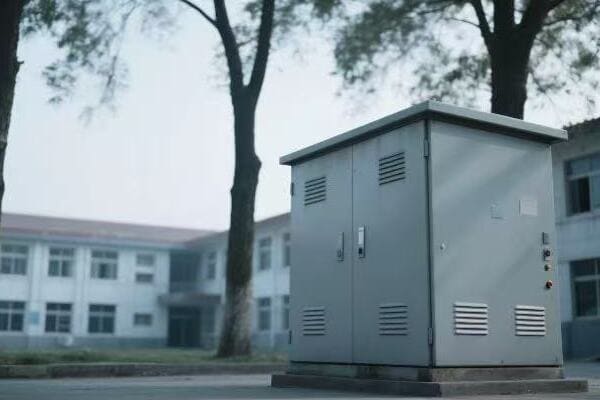
As someone who has worked in the power industry for years, I've seen firsthand how transformers shape our electrical systems. Let's dive deeper into the world of power transformers and explore their fascinating workings.
Voltage Transformation: The Primary Role of Power Transformers in Electrical Systems?
Imagine trying to drink from a fire hose. That's what using electricity straight from a power plant would be like. Power transformers are the devices that make electricity usable for us.
The primary role of power transformers in electrical systems is voltage transformation. They can increase (step up) or decrease (step down) voltage levels as needed. This ability is crucial for efficient power transmission and safe electricity use.
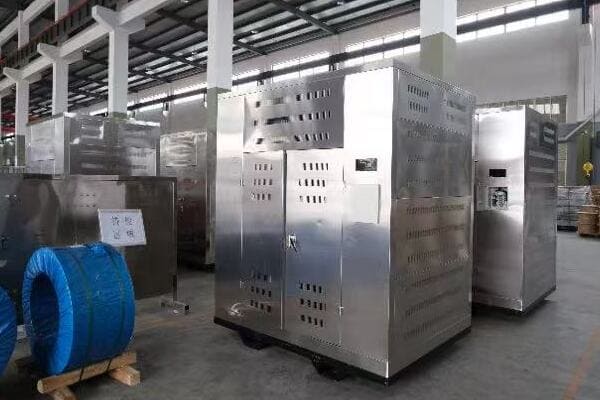
Let me break down the basics of voltage transformation in power transformers, based on my years of experience in the field.
Why Voltage Transformation Matters
Voltage transformation is crucial for our power systems. Here's why:
- Efficient Transmission: High voltage is needed for long-distance power transmission to reduce losses.
- Safe Usage: Lower voltage is required for safe use in homes and businesses.
- Equipment Compatibility: Different devices need different voltage levels to operate correctly.
How Power Transformers Transform Voltage
Power transformers change voltage through a process called electromagnetic induction. Here's a simple breakdown:
- Primary Coil: This coil receives the input voltage.
- Magnetic Field: The alternating current in the primary coil creates a changing magnetic field.
- Secondary Coil: This coil is exposed to the changing magnetic field, which induces a new voltage.
- Turns Ratio: The ratio of turns in the primary and secondary coils determines the voltage change.
Types of Voltage Transformation
Power transformers can transform voltage in two main ways:
| Type | Function | Application |
|---|---|---|
| Step-Up | Increases voltage | Power plants to transmission lines |
| Step-Down | Decreases voltage | Substations to homes |
Real-World Examples
In my work, I've seen power transformers used in various settings:
- Power Plants: Step-up transformers increase voltage for long-distance transmission.
- Substations: Step-down transformers decrease voltage for local distribution.
- Pole-mounted Transformers: These further step down voltage for residential use.
- Industrial Facilities: Large transformers adjust voltage for specific manufacturing processes.
Understanding voltage transformation is key to grasping the role of power transformers in our electrical systems. It's this ability that allows us to have a flexible and efficient electrical grid, capable of delivering power from distant plants to our homes safely and efficiently.
Beyond Voltage Change: How Transformers Optimize Power Transmission and Distribution?
Have you ever wondered why we need such high voltages for power transmission? The answer lies in the transformer's ability to optimize power transmission and distribution, going beyond simple voltage changes.
Power transformers optimize transmission and distribution by enabling high-voltage, low-current power transfer over long distances. This reduces power losses and improves overall system efficiency. They also provide isolation, regulate voltage, and help manage power factor.
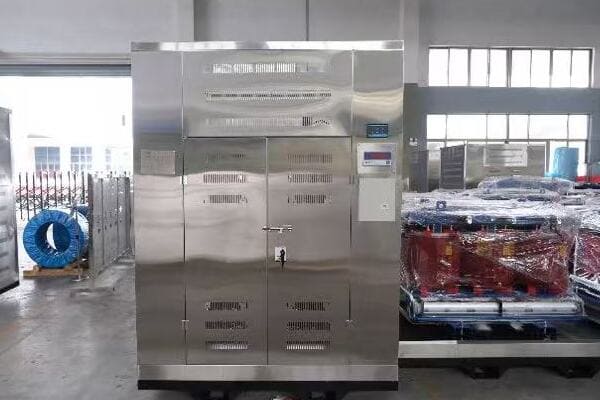
Let me explain how transformers optimize our power systems, drawing from my experience in the field.
Reducing Power Losses
One of the main ways transformers optimize power transmission is by reducing losses. Here's how:
- High Voltage Transmission: Transformers allow us to step up voltage for transmission.
- Lower Current: Higher voltage means lower current for the same power.
- Reduced Losses: Power loss in transmission lines is proportional to the square of the current (P = I^2 * R).
Improving System Efficiency
Transformers improve overall system efficiency in several ways:
- Matching Source and Load: They help match the voltage of power sources to the needs of loads.
- Reducing Line Voltage Drop: By using higher voltages, they reduce voltage drop over long distances.
- Enabling Parallel Operation: Transformers allow multiple generators to work together efficiently.
Providing Electrical Isolation
Isolation is another key function of transformers:
- Safety: They isolate high-voltage systems from low-voltage ones, enhancing safety.
- Noise Reduction: Isolation helps reduce electrical noise in sensitive equipment.
- Ground Fault Protection: Isolation transformers can prevent ground fault currents from propagating.
Voltage Regulation
Transformers play a crucial role in voltage regulation:
- Tap Changers: Many transformers have tap changers to adjust voltage ratios.
- Automatic Voltage Regulators: Some transformers work with voltage regulators to maintain stable voltage.
Power Factor Correction
In some cases, transformers can help with power factor correction:
- Reactive Power: They can provide or absorb reactive power to improve power factor.
- Efficiency Improvement: Better power factor means more efficient power transmission.
Comparison of Transformer Optimization Techniques
| Technique | How It Works | Benefit |
|---|---|---|
| High Voltage Transmission | Steps up voltage for transmission | Reduces power losses |
| Electrical Isolation | Separates primary and secondary circuits | Enhances safety and reduces noise |
| Tap Changing | Adjusts turns ratio | Helps regulate voltage |
| Reactive Power Control | Provides or absorbs reactive power | Improves power factor |
In my work designing power systems, I've seen how these optimization techniques make a real difference. They're the reason we can have a reliable and efficient power grid spanning vast distances. Understanding these aspects of transformer operation is crucial for anyone working in or interested in power systems.
The Science of Transformation: Electromagnetic Principles in Power Transformers?
Have you ever been curious about the magic behind power transformers? How can they change voltage levels so efficiently? The answer lies in a fascinating interplay of electromagnetic principles.
Power transformers work based on the principles of electromagnetic induction and mutual inductance. They use two or more coils of wire wrapped around an iron core. When alternating current flows through one coil, it creates a changing magnetic field that induces a voltage in the other coil.
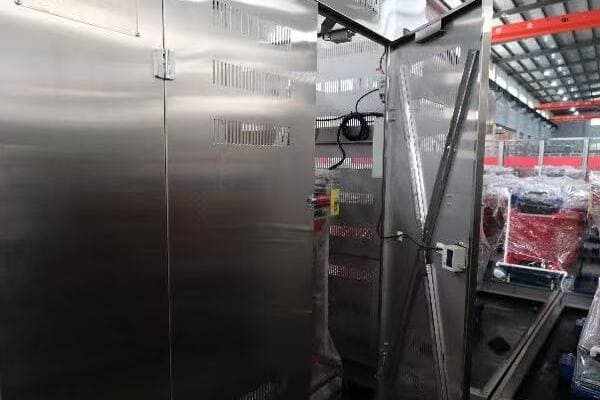
Let me explain these fascinating principles and how they apply to power transformers, based on my experience in the field.
Electromagnetic Induction: The Foundation
Electromagnetic induction is the key principle behind transformer operation. Here's how it works:
- Changing Magnetic Field: When an alternating current flows through a coil, it creates a changing magnetic field.
- Induced Voltage: This changing magnetic field can induce a voltage in a nearby conductor.
- Faraday's Law: The induced voltage is proportional to the rate of change of the magnetic field.
Mutual Inductance: The Transfer of Energy
Mutual inductance is how transformers transfer energy between coils:
- Primary Coil: The coil connected to the power source.
- Secondary Coil: The coil where we want to induce a voltage.
- Shared Magnetic Field: Both coils are linked by the same magnetic field.
- Energy Transfer: Energy is transferred from the primary to the secondary through this shared field.
The Role of the Iron Core
The iron core in a transformer plays a crucial role:
- Increased Magnetic Flux: Iron has high magnetic permeability, increasing the magnetic flux.
- Improved Coupling: It improves the coupling between the primary and secondary coils.
- Reduced Magnetizing Current: It reduces the current needed to create the magnetic field.
The Transformer Equation
The relationship between the primary and secondary coils is described by the transformer equation:
Vs / Vp = Ns / Np
Where:
- Vs = Secondary Voltage
- Vp = Primary Voltage
- Ns = Number of turns in Secondary Coil
- Np = Number of turns in Primary Coil
Electromagnetic Principles in Action
Let's see how these principles work together in a transformer:
| Principle | How It's Applied | Result |
|---|---|---|
| Electromagnetic Induction | AC in primary coil creates changing magnetic field | Voltage induced in secondary coil |
| Mutual Inductance | Coils share a magnetic field | Energy transferred between coils |
| Iron Core | Concentrates magnetic field | Improves efficiency of energy transfer |
Practical Considerations
In my work with power transformers, I've learned that understanding these principles is crucial for design and troubleshooting:
- Core Saturation: We must design transformers to avoid core saturation, which can lead to inefficiency and harmonics.
- Eddy Currents: We use laminated cores to reduce eddy current losses.
- Hysteresis: Choosing the right core material can minimize hysteresis losses.
- Leakage Flux: Proper coil arrangement helps minimize leakage flux and improve efficiency.
Understanding these electromagnetic principles is key to grasping how power transformers work. It's amazing how these fundamental laws of physics, discovered over a century ago, still form the basis of our modern electrical grid.
Transformer Functions Across Industries: From Residential to Heavy Industrial Applications?
Have you ever stopped to think about how many transformers you encounter in a day? From your home to large industrial facilities, transformers play crucial roles in various settings.
Power transformers serve diverse functions across industries. In residential settings, they step down voltage for safe home use. In commercial buildings, they power lighting and HVAC systems. In heavy industry, they provide the massive power needed for manufacturing processes and electric arc furnaces.

Let me take you on a tour of transformer applications across different industries, based on my years of experience in the power sector.
Residential Applications
In our homes, transformers are working behind the scenes:
- Distribution Transformers: These step down voltage from the grid to levels safe for home use.
- Doorbell Transformers: They reduce voltage for doorbell operation.
- HVAC Systems: Transformers power the control circuits in heating and cooling systems.
Commercial Buildings
Commercial buildings rely heavily on transformers:
- Lighting Systems: Transformers power both indoor and outdoor lighting.
- Elevator Systems: They provide the power needed for elevator operation.
- Security Systems: Transformers supply power to surveillance cameras and access control systems.
Healthcare Facilities
Hospitals and clinics have specialized transformer needs:
- Isolation Transformers: These provide electrical isolation for sensitive medical equipment.
- Uninterruptible Power Supplies (UPS): Transformers are key components in UPS systems.
- MRI Machines: Special transformers power these high-energy diagnostic tools.
Heavy Industry
Industrial applications often require large, specialized transformers:
- Electric Arc Furnaces: These use massive transformers to provide the high currents needed for steel production.
- Electrolysis Processes: Transformers supply the DC power needed for aluminum production.
- Variable Frequency Drives: Transformers are part of systems that control motor speeds in various processes.
Renewable Energy
The renewable energy sector relies on transformers:
- Wind Farms: Step-up transformers increase voltage for long-distance transmission from offshore wind farms.
- Solar Farms: Inverter transformers convert DC power from solar panels to AC for grid use.
- Hydroelectric Plants: Large transformers step up voltage for power transmission from remote locations.
Comparison of Transformer Applications Across Industries
| Industry | Transformer Type | Function | Typical Size |
|---|---|---|---|
| Residential | Distribution | Step down voltage for home use | 10-50 kVA |
| Commercial | Dry-type | Power building systems | 75-2500 kVA |
| Healthcare | Isolation | Protect sensitive equipment | 3-300 kVA |
| Heavy Industry | Oil-filled | Power large industrial processes | 5-100 MVA |
| Renewable Energy | Step-up | Increase voltage for transmission | 1-100 MVA |
Challenges and Innovations
In my work across these industries, I've encountered various challenges:
- Size and Weight: In urban environments, we're always looking for ways to make transformers smaller and lighter.
- Efficiency: Improving efficiency is a constant goal, especially for large industrial transformers.
- Reliability: In critical applications like healthcare, transformer reliability is paramount.
- Environmental Concerns: We're developing more environmentally friendly insulating materials and cooling methods.
Understanding the diverse applications of transformers across industries gives us a new appreciation for these often-overlooked devices. From the small transformers in our homes to the massive ones in industrial facilities, these devices are working tirelessly to power our modern world.
Enhancing Grid Stability and Efficiency: The Critical Role of Power Transformers?
Have you ever wondered how our power grid stays stable despite constantly changing demands? Power transformers play a crucial role in maintaining this delicate balance.
Power transformers enhance grid stability and efficiency by regulating voltage, managing power flow, and providing reactive power support. They also enable the integration of renewable energy sources and help in fault isolation, contributing to a more reliable and efficient power system.
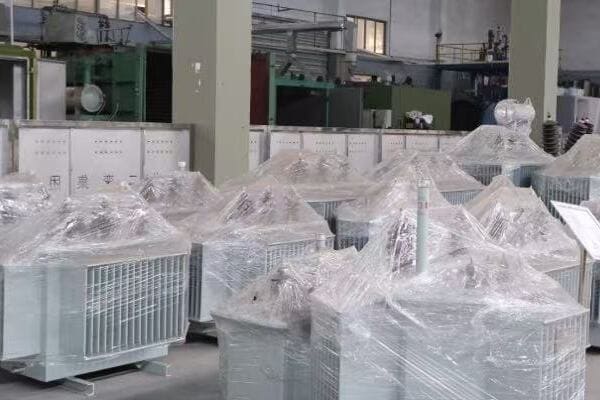
Let me share some insights from my experience about how transformers contribute to grid stability and efficiency.
Voltage Regulation
Transformers are key to maintaining stable voltage levels:
- On-Load Tap Changers: These allow transformers to adjust voltage ratios while in operation.
- Voltage Control: Transformers help maintain voltage within acceptable limits across the grid.
- Voltage Profile Improvement: By strategically placing transformers, we can improve the voltage profile of the entire system.
Power Flow Management
Transformers play a crucial role in managing power flow:
- Phase Shifting Transformers: These control the direction of power flow in the grid.
- Load Balancing: Transformers help distribute load evenly across the system.
- Congestion Management: They can help alleviate transmission line congestion.
Reactive Power Support
Transformers contribute to reactive power management:
- Magnetizing Current: Transformers can provide or absorb reactive power.
- Power Factor Correction: This improves overall system efficiency.
- Voltage Stability: Reactive power support enhances voltage stability.
Fault Isolation and System Protection
Transformers are crucial for system protection:
- Electrical Isolation: They can isolate faults and prevent them from propagating.
- Differential Protection: Transformers are key components in differential protection schemes.
- Inrush Current Mitigation: Modern transformers are designed to minimize inrush currents, improving system stability during switching operations.
Renewable Energy Integration
Transformers are essential for integrating renewable energy sources:
- Variable Output Management: They help manage the variable output of wind and solar sources.
- Grid Connection: Transformers enable the connection of renewable sources to the grid.
- Harmonic Mitigation: Some transformers are designed to mitigate harmonics from renewable energy inverters.
Comparison of Transformer Roles in Grid Stability and Efficiency
| Role | How It's Achieved | Benefit to Grid |
|---|---|---|
| Voltage Regulation | On-Load Tap Changers | Maintains stable voltage levels |
| Power Flow Management | Phase Shifting Transformers | Controls direction of power flow |
| Reactive Power Support | Magnetizing Current | Improves power factor and efficiency |
| Fault Isolation | Electrical Isolation | Prevents fault propagation |
| Renewable Integration | Specialized Designs | Enables clean energy adoption |
Challenges and Innovations
In my work with grid systems, I've seen several challenges and innovations:
- Smart Transformers: These can communicate with the grid and adjust their operation in real-time.
- High-Temperature Superconducting Transformers: These promise near-zero resistance and very low losses.
- Solid-State Transformers: These offer more flexibility in power control and can handle DC as well as AC.
- Asset Health Monitoring: Advanced sensors and analytics help predict and prevent transformer failures.
- Resilience to Cyber Attacks: As transformers become more connected, cybersecurity is an increasing concern.
The Future of Transformers in Grid Stability
Looking ahead, I see transformers playing an even more critical role in grid stability and efficiency:
- Microgrid Support: Transformers will be key in enabling microgrids to operate both connected to and isolated from the main grid.
- Energy Storage Integration: They'll help integrate large-scale energy storage systems into the grid.
- Electric Vehicle Charging: As EV adoption grows, transformers will need to handle new load patterns.
- AI and Machine Learning: These technologies will enhance transformer operation and maintenance.
Understanding the critical role of power transformers in enhancing grid stability and efficiency is crucial for anyone interested in the future of our energy systems. These devices, often overlooked, are at the forefront of our efforts to create a more reliable, efficient, and sustainable power grid.
Conclusion
Power transformers are the unsung heroes of our electrical systems. They play a crucial role in voltage transformation, power transmission optimization, and grid stability. From residential to industrial applications, transformers are essential for our modern electrified world.


